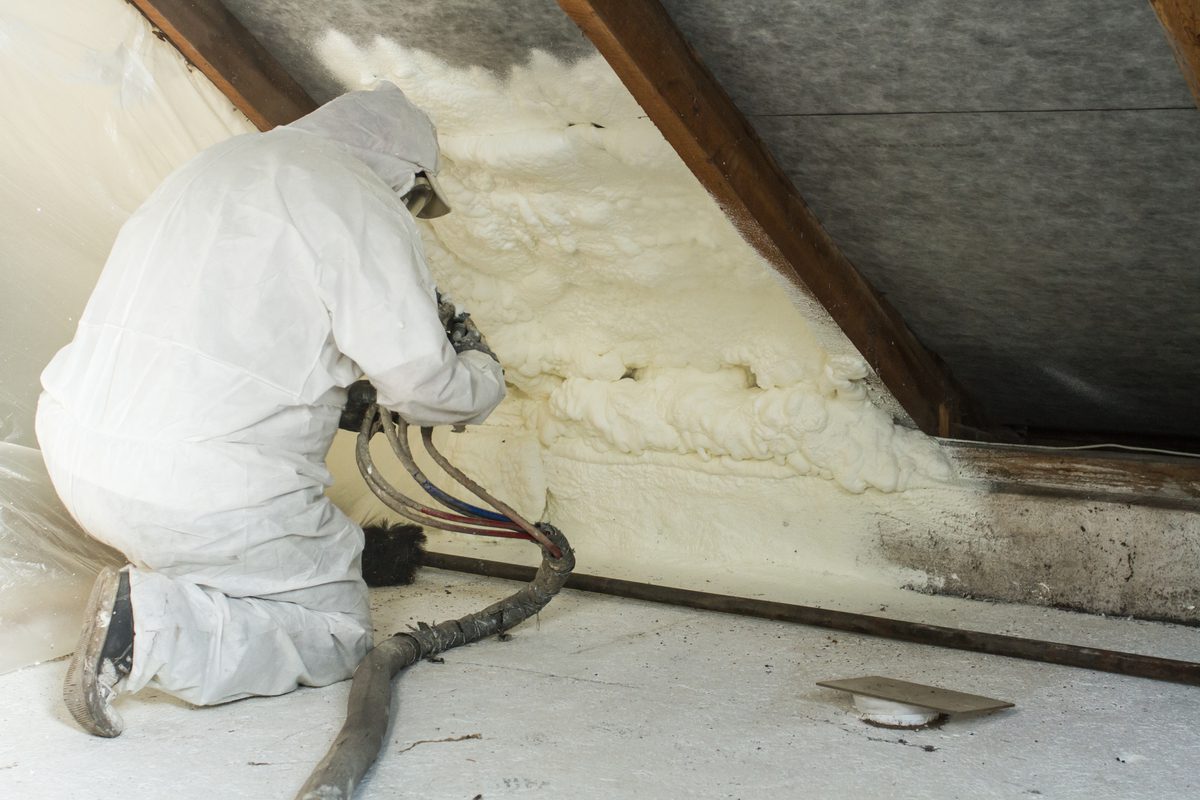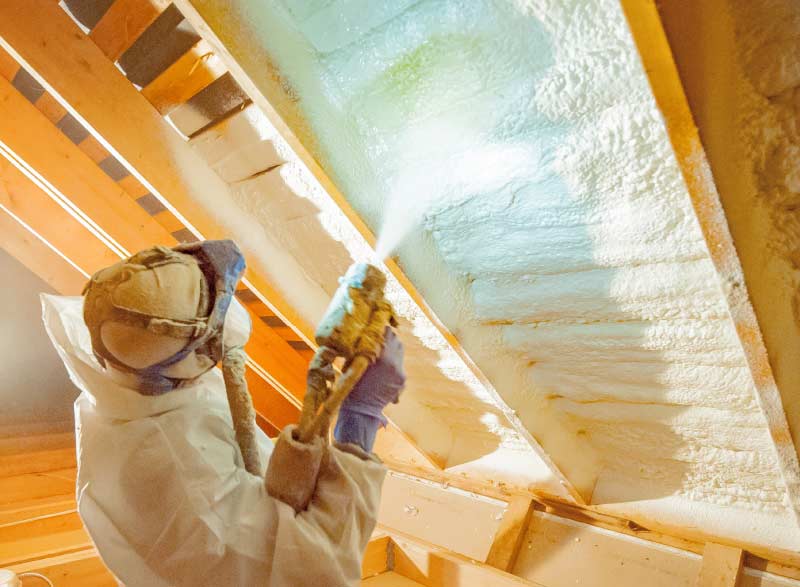
Spray foam insulation, which was created in the 1940’s primarily for aircraft, has been improved upon over the years and become a staple in residential and commercial construction.
Spray foam insulation can be used as an air barrier, decreasing air leakage in a home or building. Its use will decrease the risk of mold or mildew growth, and the formation of ice dams in colder climates.
Spray foam insulation, used to insulate and create air seals wherever it is applied, is made with 2 liquids. When combined, these liquids create a chemical reaction and expand up to 100 times its size. There are 2 types of spray foam insulation, open and closed cell spray foam. Open cell spray foam is low density and allows water permeability. This spray foam is typically used in walls and under crawl spaces. Closed cell spray foam has medium density and repels water, making it a FEMA-approved flood resistant material.
Open Cell Spray Foam Insulation Benefits
Open cell spray foam insulation is a more economical option and costs significantly less than closed cell spray foam insulation. Fortunately, it is not a food source for mold, and is forgiving of long-term creep and seasonal movement within the home. The open cell spray foam can also add the additional benefit of drowning out sound.
Closed Cell Spray Foam Insulation Benefits:
Closed cell spray foam insulation is recognized by FEMA to be a flood resistant material. Unlike open cell spray foam, closed cell spray foam insulation can be applied at extremely cold temperatures and can be used in smaller spaces. Closed cell spray foam is more durable and impact resistant.
Spray Foam Insulation and Global Warming Potential
According to the EPA, “The Global Warming Potential (GWP) was developed to allow comparisons of the global warming impacts of different gases. Specifically, it is a measure of how much energy the emissions of 1 ton of a gas will absorb over a given period of time, relative to the emissions of 1 ton of carbon dioxide (CO2). The larger the GWP, the more that a given gas warms the Earth compared to CO2 over that time period. The time period usually used for GWPs is 100 years. GWPs provide a common unit of measure, which allows analysts to add up emissions estimates of different gases (e.g., to compile a national GHG inventory), and allows policymakers to compare emissions reduction opportunities across sectors and gases.”
Blowing agents are the gases that expand the cells of foam insulation. Open Cell Spray Foam Insulation, and spray foam that uses water as the blowing agent, will have the least possible GWP with a score of 1. Blowing agents are the gases that expand the cells of foam insulation. Closed cell spray foam insulation uses synthetic blowing agents and has a GWP of 700-1000, which is considerably higher than its open cell counterpart.
If you have any questions about whether spray foam insulation is the right choice for your home or property, contact Geo Insulation today.






